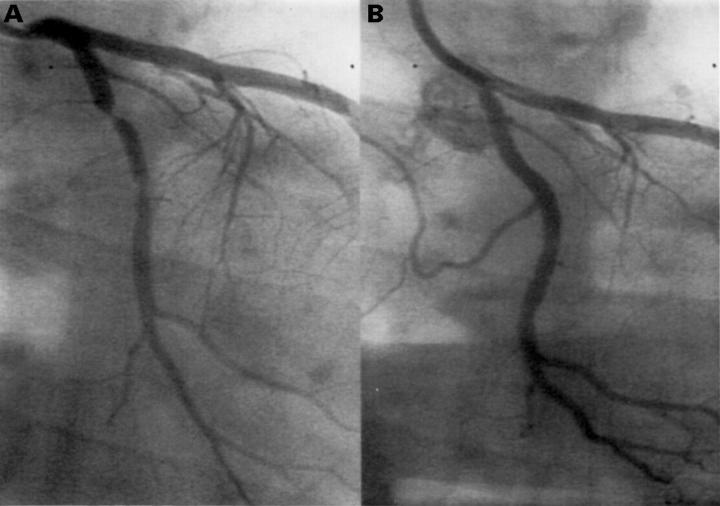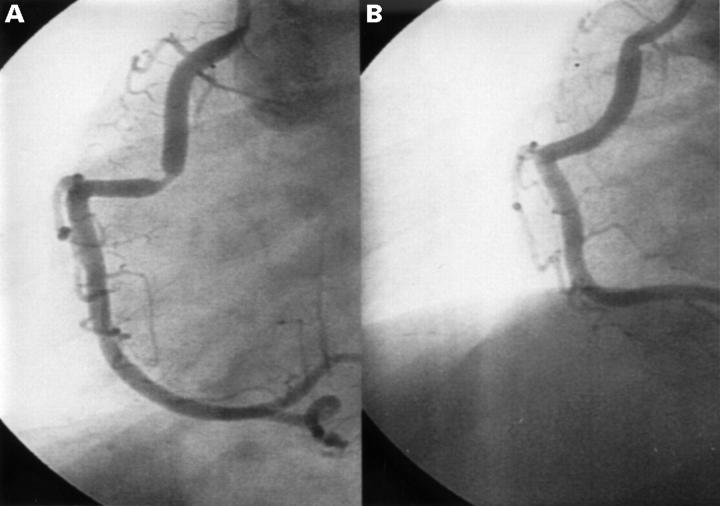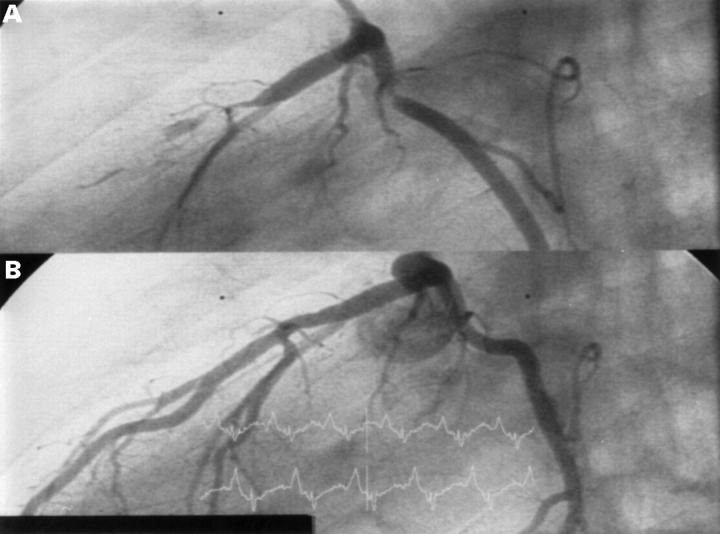Abstract
A 30 year old man had an acute anterolateral myocardial infarction following which he developed unstable angina requiring percutaneous transluminal coronary angioplasty. He subsequently developed further angina with recurrence of coronary artery lesions that were reversed by intracoronary nitrate. A diagnosis of prinzmetal (vasospastic) angina was made and this had been the apparent cause of his myocardial infarction. He was treated with a calcium antagonist and an oral long acting nitrate with resolution of symptoms. He remained well and symptom free, and was reviewed in the outpatient clinic six weeks after discharge without problems. Keywords: coronary spasm; acute myocardial infarction; syndrome X; prinzmetal's angina
Full Text
The Full Text of this article is available as a PDF (112.0 KB).
Figure 1 .
Coronary angiography showing a severe proximal circumflex artery stenosis (99%) (right anterior oblique projection) (A) before PTCA; (B) repeat left coronary angiography following successful PTCA.
Figure 2 .
(A) Coronary angiography showing a proximal right coronary artery stenosis of 80-90% (left anterior oblique projection). (B) Repeat coronary angiography following successful PTCA.
Figure 3 .
(A) Repeat coronary angiography demonstrating a completely occluded left anterior descending artery from the mid-segment, and a tight stenosis in the proximal circumflex artery at the site of the previous PTCA (left lateral projection). (B) Completely healthy and normal left coronary system after intracoronary nitrate.





